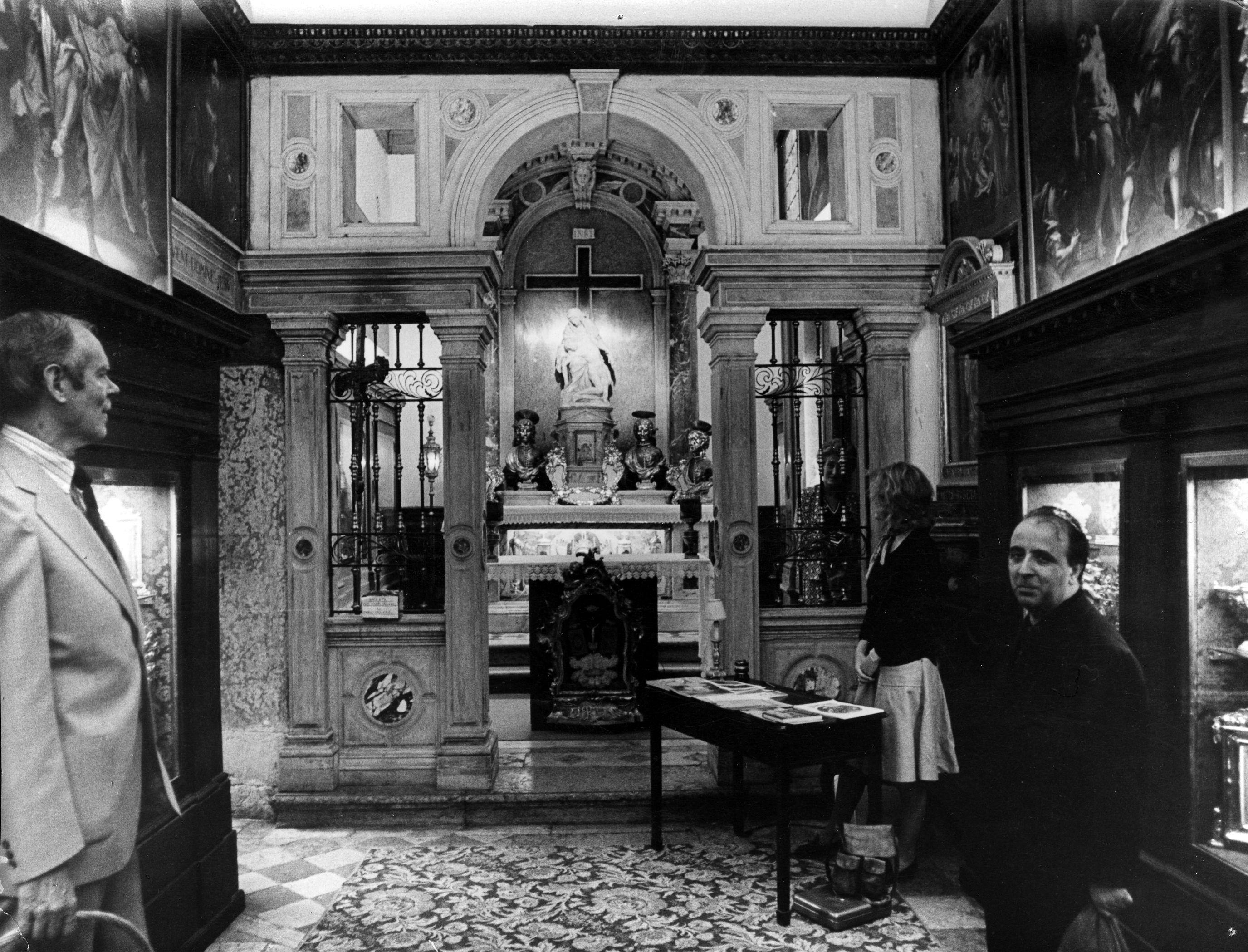Basilica of San Pietro Di Castello

Significance
From the ninth century until 1807, when Saint Mark’s Basilica became Venice’s official cathedral, the Church of San Pietro di Castello functioned as the spiritual and administrative religious center of the city.
Background
Erected on the island of Castello at the eastern edge of the Venetian lagoon, the Church of San Pietro underwent several renovations and reconstructions during its long history. In the 1480s, the architect Mauro Codussi (also known as Coducci) largely rebuilt the church’s bell tower with white Istrian stone. Andrea Palladio planned modifications to the structure again in the late 1550s, though his designs were not fully executed. At the end of the 16th century, the architects Francisco Smeraldi and Giovanni Grapiglia completed a new façade for the Church. Three hundred years later, after losing its preeminent spot to St. Mark’s, San Pietro fell into a state of relative neglect. The church was firebombed during the First World War and, though rebuilt, continued to decline due to insufficient funding and general neglect.

How We Helped
WMF’s extensive work at San Pietro di Castello began in 1970 with conservation of church window casings, floors, walls, and stone and wooden furnishings. Conservationists restored walls to their original marmorino finish, replaced damaged pavement blocks with new ones, corrected loose or damaged stonework, and restored church portals. San Pietro also required several larger-scale interventions, including repairs to its bell tower and cracked bell, and restoration of its 18th-century Nacchini organ. In the first case, WMF repaired both bell tower and bell in situ, replacing missing portions of the metal rim. In the second, conservationists refinished the organ’s original Baroque cabinet, returned its registers to their original order, and replaced irreparable parts within the instrument.

Why It Matters
Neglected and underutilized, the Church of San Pietro di Castello had, by 1970, become little more than a local parish church, its historic role as a major religious institution largely forgotten. WMF’s efforts restored the high quality of design that characterized the church and denoted its high ecclesiastical importance during its 11-century history. Successful conservation of the site, whose remoteness had contributed to its relative lack of attention, yielded not only a resurgence in visitors, but also made San Pietro a premier site for organ concerts, an attraction for both renowned organists and interested audiences.

WMF in Venice
Venice or Expo: It is Up to You
Venice in Peril
Related Projects

Basilica of Santa Maria Assunta
Torcello is home to the Cathedral of Santa Maria Assunta, established in 639 according to the wishes of the Byzantine Emperor Heraclius and the Exarch of Ravenna.

Santa Maria del Giglio Church (Santa Maria Zobenigo)
Much of the current design for Santa Maria del Giglio dates to a 1680-83 renovation by the architect Giuseppi Sardi, working under the patronage of Antonio Barbaro.

Scuola Grande Di San Giovanni Evangelista

San Giovanni in Bragora
San Giovanni in Bragora was founded in the 7th century, making it one of the oldest churches in Venice.

Santa Maria Della Visitazione (Church of the Pietà)
The Church of Santa Maria della Visitazione, also known as the Church of the Pietà, was designed by the architect Giorgio Massari and built between 1745 and 1760.

